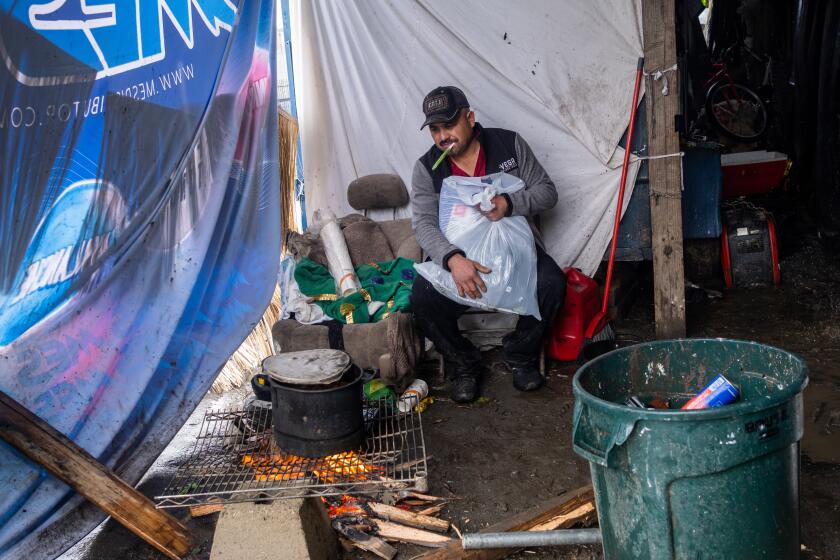Solving homelessness will require cooperation
Los Angeles remains the nation’s homelessness capital, with almost 48,000 people living around the county on streets, in cars and in shelters, according to the Los Angeles Homeless Service Authority. About a fourth of them are chronically homeless, burdened in many cases by physical and mental ailments that make it hard for them to reintegrate into society.
The magnitude and intractability of the problem haven’t stopped policymakers and homeless advocates from offering plan after plan for improving the situation, but none has made much of a dent in the homeless population. On Tuesday, yet another group will weigh in: the Business Leaders Task Force on Homelessness, a project organized by the local branches of the Chamber of Commerce and the United Way. There is much to recommend in the plan and we wish the group well. But unless the task force draws the unflinching support of government, service providers and volunteer groups, its plan will probably suffer the same fate as the many that came before it.
The task force’s goal is to end homelessness in the county, not just manage it. To do so, it proposes a rapid increase in permanent supportive housing over five years. Such housing, which offers ready access to treatment, training and counseling, would be provided for all of the county’s chronically homeless and homeless veterans.
It’s ambitious, yet the plan isn’t new or radical. Instead, it reflects an emerging consensus around the country that getting the homeless into permanent housing should be the top priority. It also aligns with the county’s Project 50 initiative and the Obama administration’s stated goal of getting all veterans and chronically homeless off the streets. And the biggest selling point, some advocates say, is that these efforts save money in the long term because they reduce the amount spent on shelters, emergency rooms, jails and other crisis services.
The most obvious challenge will be freeing about $230 million annually to provide permanent supportive housing for all the chronically homeless over the next five years. Just as big a hurdle, though, could be the lack of coordination among the many layers of government and the private and nonprofit service providers that play a role in combating homelessness. Cooperation has been improving, yet the task force will still have to sell its plan to multiple factions that don’t always see eye to eye on the nature of the problem, let alone the solution. Here’s hoping that the clarity and ambition provided by the plan doesn’t get lost in the struggle to implement it.



